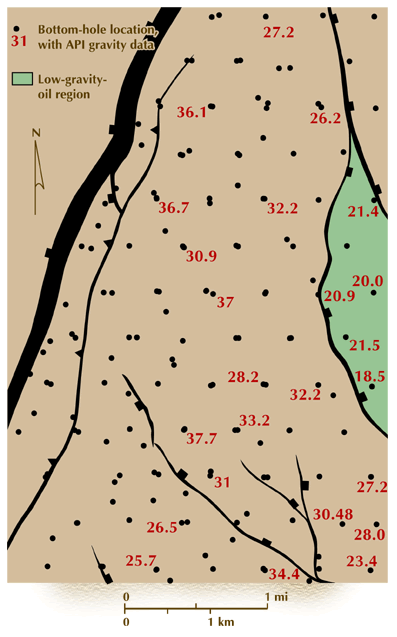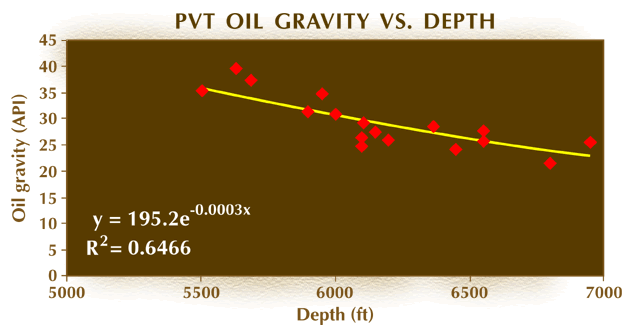 |
 |
| ©2000 AGI |

When a fluid is acting as a single volume, it will homogenize over time because of mixing processes. These mixing processes are diffusion and density-driven convection and are affected by temperature and pressure. Consequently, changes in fluid chemistry in a single volume occur gradually over distances. When changes in water and/or hydrocarbon chemistry occur abruptly, a fluid-flow barrier separates the fluids into discrete volumes.
Several processes can lead to hydrocarbon variation that is subsequently preserved within a reservoir. Smalley and England (1994) summarized three main processes:
- Variations from progressive source-rock maturation
- Biodegradation of hydrocarbons
- Leakage of light hydrocarbons from portions of the reservoir
Whereas variations from progressive source-rock maturation involve fluid migration timing, the other two processes occur after the hydrocarbon is in place. Hence, they are more likely to define reservoir fluid-flow barriers.
Variation in water chemistry results from diagenesis and hydrodynamics. Rock-fluid interaction occurs over time with the dissolution and precipitation of minerals. The composition of both rock and water, along with temperature and pressure, controls this process. Often it is the movement of water through the rock that acts as a catalyst for compositional change. This movement is controlled by the hydrodynamics of the system and the heterogeneity encountered by the water as it flows.
The analysis of compositional variation is accomplished by mapping and graphing fluid characteristics. The data should be posted on both structural and genetic unit net-sandstone maps. The variation can then be tested against fault position, structural position, and the continuity of the porous medium. To test for vertical variation, plot graphs of composition vs, depth in a reservoir, or these values plotted on well logs can be reviewed. Figures 1 and 2 are examples.

Figure 1. Petroleum characteristics can vary within the same stratigraphic interval. An example is oil gravity which can display different characteristics between fault bounded reservoir campartments.

Figure 2. Petroleum characteristics can vary within the same stratigraphic interval by depth as illustrated in this graph of depth vs oil gravity.